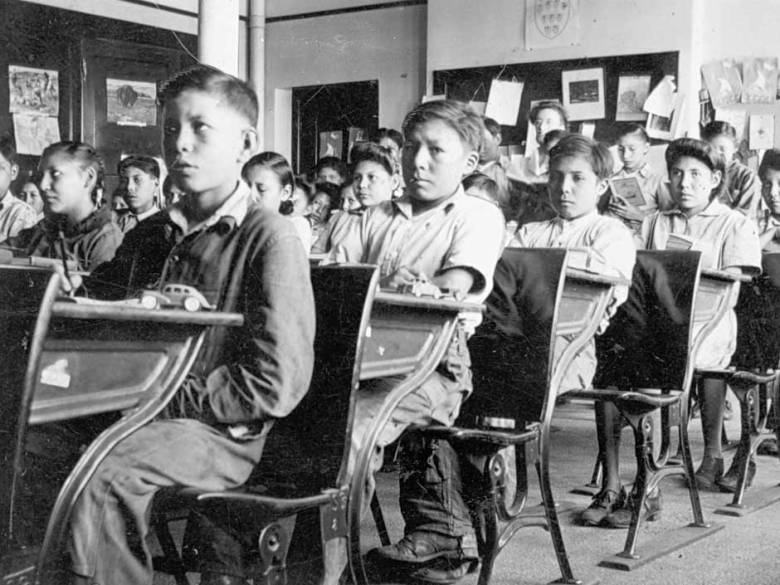This week’s reading’s “A New Understanding of Things Indian” by Paige Raibmon, and “It Was Two Different Times a Day but in the Same Place, both discuss different aspects of Indigenous education. Raley’s article discusses education that is still a system and still relates to residential schools but instead of diminishing indigenous culture he encourages supporting certain parts of it by creating cottages. These cottages, although meant to be in comparison to residential schools, they still possessed a lot of the same intentions and traits. Raibmon describes the cottages saying, “the cottage model was itself a value-laden. Although meant to create a more “home-like” atmosphere, its definition of home was Victoria and middle-class.”1 Unlike residential schools, the cottage system Raley tried to achieve was important when understanding the various kinds of education that were offered to Indigenous children. This being because the cottages provided a more positive experience than the residential schools or other systems did. Female indigenous children got to partake in Indian basketry and male Indigenous children were trained in agriculture, boat building, and Indian carving.2 This allowed children to still participate in traditional Indigenous culture. Unlike last week’s reading by Barman, Jean. “Schooled for Inequality: The Education of British Columbia Aboriginal Children.” Where children only attended half days of school, Raibmon says, “Raley broke with the otherwise ubiquitous half-day system and provided senior students with a full day of academic instruction.” 3Raibmon’s article regarding Raley’s negotiation provides further insight into Indigenous education and how not all education offered was bad.
Michael Marker’s article discusses the transition of Indigenous education into a public-school system and childhood experiences. He talks about indigenous high school students trying to survive and blend in with the expectations of the school and society. The indigenous teenagers in Ferndale dealt with “the backlash from white fishers and those opposed to treaties”4, claims Marker. Mark gives detail as to examples of indigenous actions and their ability to adapt to forces of modernity.5 The Article offers insight into indigenous people’s fight to maintain or find their identity in an environment where they were under attack of the white teachers and students. The Boldt decision being the culprit in the growth of racism and violence. Most importantly Marker identifies Indigenous people’s resistance to integration and assimilation.
Both Articles give great details to provide in-depth evidence into the experiences of children in different time and settings of indigenous education. It is important to understand the various kinds of education and segregation Indigenous people had to withstand. Some educational systems may have proved to have a more influential impact on Indigenous children (negative or positive), but all their intentions were the same; to isolate and terminate indigenous identities in some shape or form.
[1] Paige Raibmon, “‘A New Understanding of Things Indian’: George Raley’s Negotiation of the Residential School Experience.” BC Studies 110 (1996).
[2] Paige Raibmon, “‘A New Understanding of Things Indian’: George Raley’s Negotiation of the Residential School Experience.” BC Studies 110 (1996).
[3] Paige Raibmon, “‘A New Understanding of Things Indian’: George Raley’s Negotiation of the Residential School Experience.” BC Studies 110 (1996).
[4] Michael Marker, “It Was Two Different Times A Day, But In The Same Place’: Coast Salish High School Experience in the 1970s” BC Studies 144 (2004/2005).
[5] Michael Marker, “It Was Two Different Times A Day, But In The Same Place’: Coast Salish High School Experience in the 1970s” BC Studies 144 (2004/2005).
Bibliography
Raibmon, Paige. “‘A New Understanding of Things Indian’: George Raley’s Negotiation of the Residential
School Experience.” BC Studies 110 (1996): 69-96.
Marker, Michael. 2004. “‘IT WAS TWO DIFFERENT TIMES OF THE DAY, BUT IN THE SAME PLACE’: Coast
Salish High School Experience in the 1970s.” BC Studies, no. 144 (Winter2004/2005): 91.
https://ezproxy.tru.ca/login?url=https://search.ebscohost.com/login.aspx?direct=true&db=a9h&AN=17598593&site=eds-live.
I chose to incorporate these readings into my portfolio because they refer to indigenous education outside of the residential school system. It is important to understand that residential schools were not the only education system Indigenous people were exposed too. More importantly, it supports the fact that education for Indigenous children was still segregated. Even in a different education system Indigenous children still struggled with discrimination, violence, and racism.

Leave a Reply